We recently had the opportunity to test the Netgear ReadyNAS 4312X, which is a 2U NAS capable of replacing larger legacy NAS units that cost several times as much. With its 12 bays and 120TB capacity (we expect this to go higher with 12TB+ drives) the ReadyNAS 4312X would be an interesting option for companies looking to migrate from legacy filers such as a NetApp FAS2020, FAS2040 or FAS2220. Netgear has a solid hardware platform and a solid set of features that would allow a SMB organization to use a lower cost NAS rather than buy into a higher-end and higher-priced vendor’s entry solution.
Netgear ReadyNAS 4312X Overview
The Netgear RadyNAS 4312X is a 2U storage server focused on providing up to 12x 3.5″ hard drives for storage. With 10TB drives that is 120TB capacity and we expect that as 12TB drives become more available 144TB in the 2U chassis will become a reality.
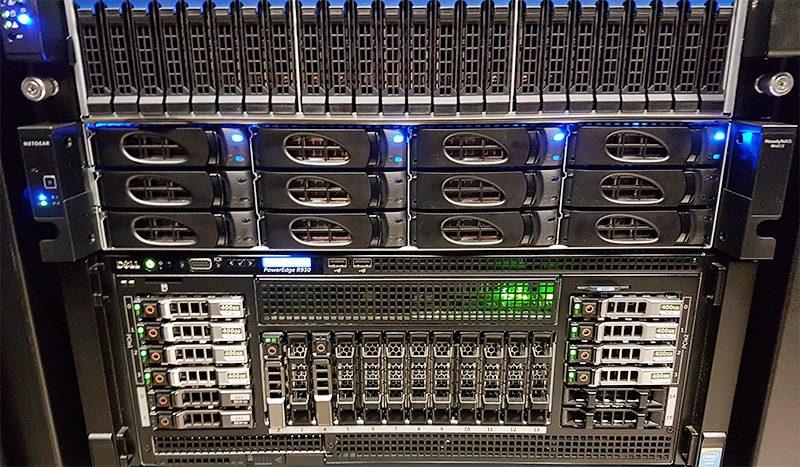
That particular shot has the system nestled between a Gigabyte dual Cavium ThunderX 48 core (96 total) machine which is the fastest commercially available ARM64 platform on the market. The machine below the Netgear is a Dell PowerEdge R930 which is one of the fastest 96 core/ 192 thread quad Xeon E7 V4 systems around. Both the Gigabyte-Cavium and the Dell are 2.5″ only chassis as you can see so they will require 3.5″ network storage which the Netgear ReadyNAS RR4312X can provide.
Netgear does provide a nice faceplate to the unit and the mounting rails are tool-less in design which makes installation of the unit both easy and looking sharp after it is complete. The faceplate also provides protection against accidental or unauthorized intentional removal of a drive from the chassis.
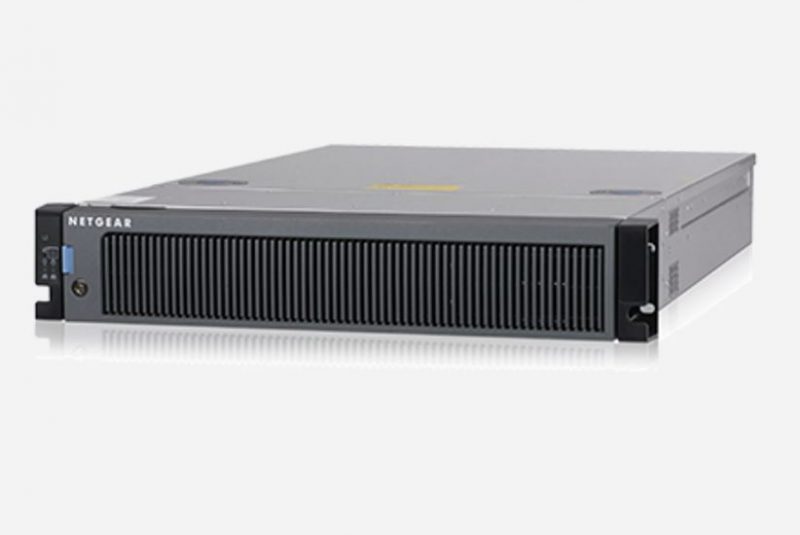
We did like the fact that Netgear provides a label with pertinent information directly on the chassis. You can easily use a mobile phone barcode reader app to capture and store MAC address information for network configuration.
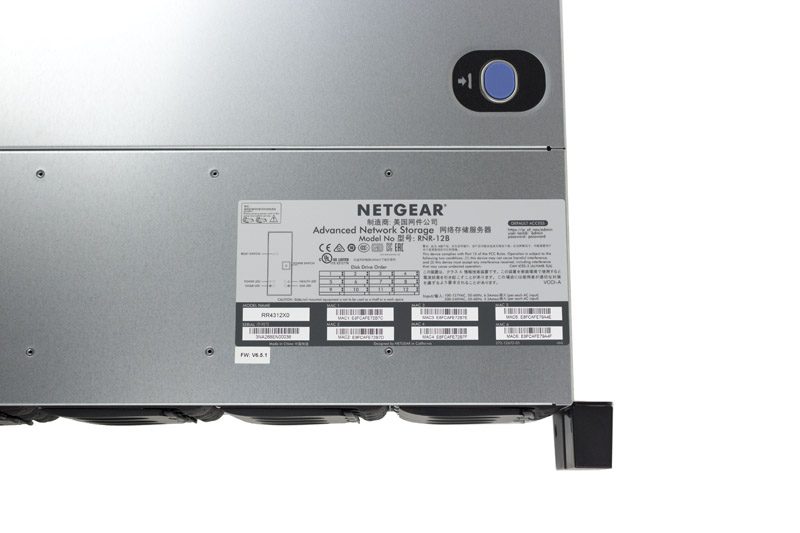
We do slightly prefer having this information on the front or rear of the chassis so it can be accessed later without disturbing the unit. Still, this is a very rational decision and with storage chassis, there is no room for that much information on the front of the chassis which is dominated by hot swap bays.
The 3.5″ drive trays come pre-installed with svelt drive blanks that were easy to remove. They provide mounting for both 3.5″ hard drives as well as bottom mounting holes for 2.5″ drives.
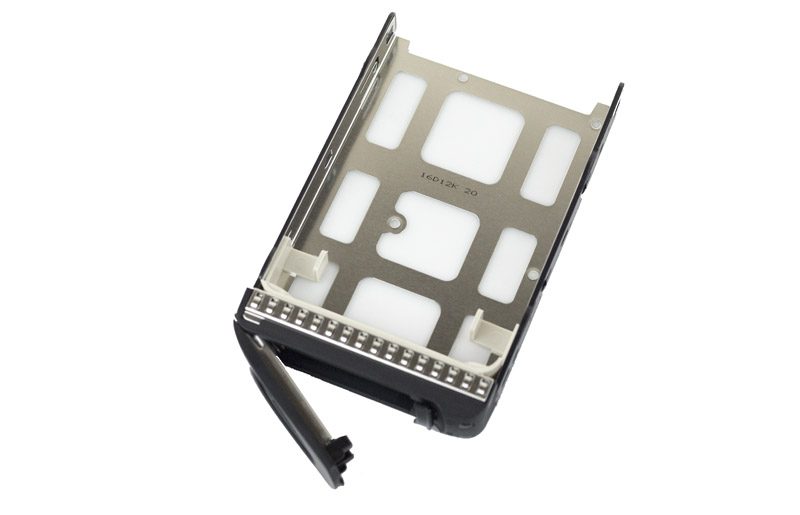
The rear of the chassis has redundant, hot-swap, 550w power supplies which worked perfectly both on power failure and the re-application of power. The main feature of the rear of the chassis is connectivity.
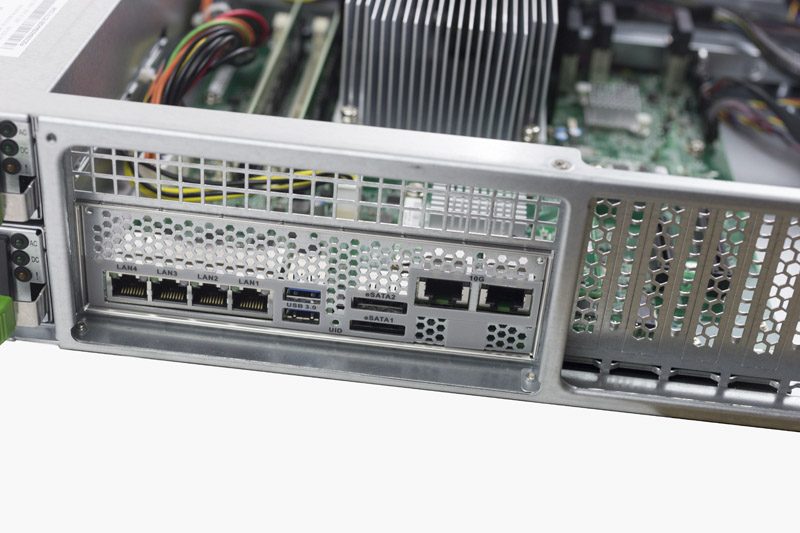
The Netgear ReadyNAS provides 4x 1GbE ports and 2x 10Gbase-T ports for 24Gbps of network connectivity. The two USB and eSATA ports are available to provide connectivity for additional devices such as external hard drives. It is less common that you will see eSATA drives in the data center but we certainly have seen many companies use a sneakernet to transfer TBs of data.
If you are a normal user, that is likely all of the hardware you will ever see in the Netgear ReadyNAS 4312X. Since this is STH, we like to delve deeper into what the platform is made of.
Opening the chassis we can see an Intel Xeon E3-1200 V5 platform that follows a standard server design methodology. Mid-chassis fans provide airflow through the drive bays and two fans have ducted redundant airflow to the passive CPU heatsink as well as the 10Gbase-T NIC.
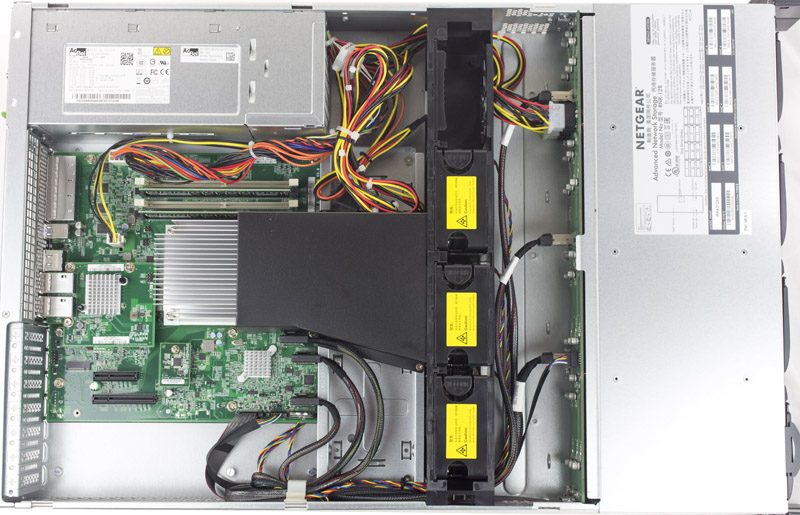
The three mid-plane fans are PWM controlled units and utilize Chenbro fan carriers for hot swap operation. The total time to service a failed fan was under a minute when we timed it with full access to the top of the chassis.
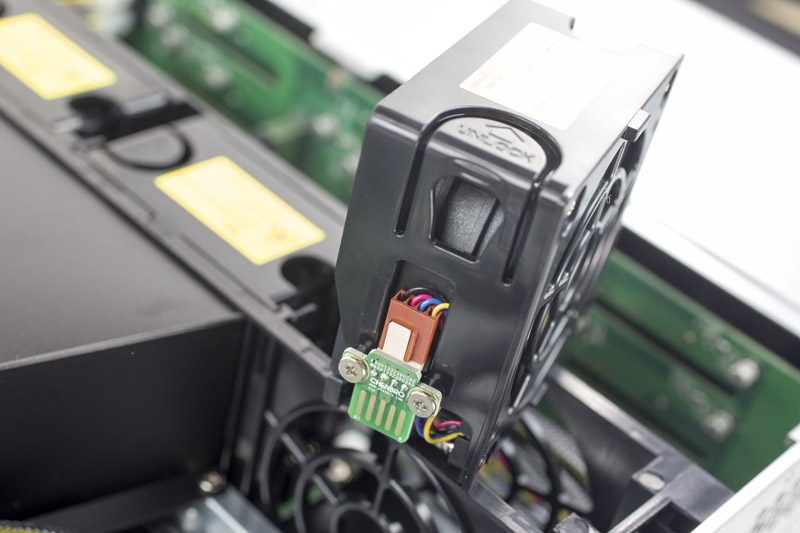
Another potentially replaceable and upgradeable part is the RAM. We can see two 8GB Transcend DDR4-2133 ECC modules in the system with room for up to four. With a total of 16GB installed it is unlikely you will need more on this machine but the option is there especially for systems integrators that may try to do more with these machines (more on this later.)
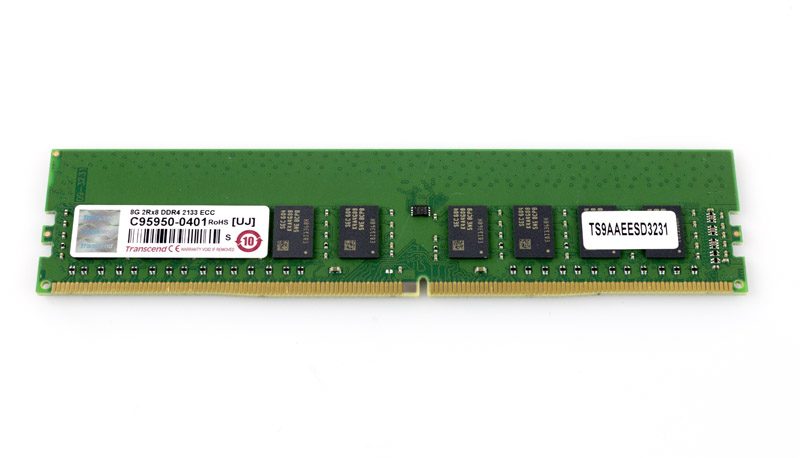
We did see a USB DOM with a Phison controller onboard. It is common in storage servers to use a SATA or USB DOM to install the OS. Using a USB DOM saves SATA ports.
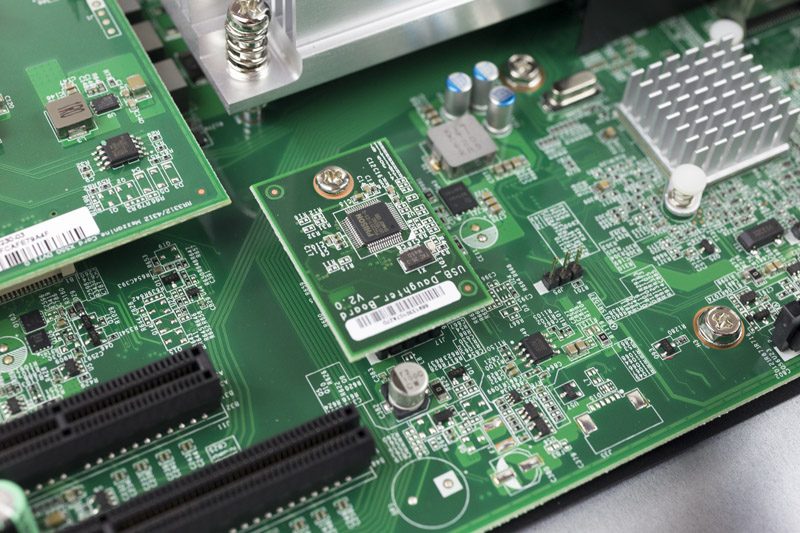
Inside the chassis we saw two PCIe ports and a mPCIe slot. These were unused in our chassis but there are future expansion options in this platform for Netgear users. We did not see mention of these expansion slots on the tech specs page for the unit.
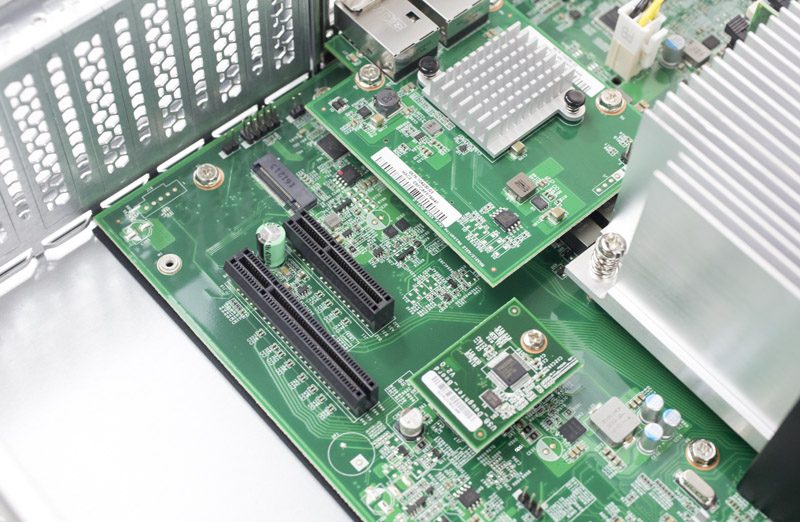
Providing 10Gbase-T ports we see a mezzanine card. This design allows Netgear to omit the card (RR3312) or utilize a different card for SFP+ networking (assuming this is how the RR4312S is executed.) We did see “Intel Corporation Device 1563” being reported which is a newer Intel X550T NIC which is excellent.
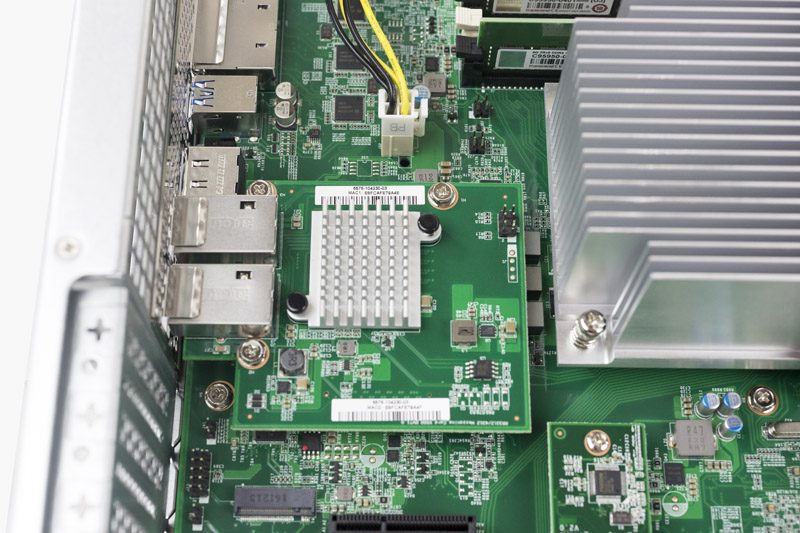
One point we did want to make is that we like Netgear’s choice of 1GbE NICs as well. Less expensive Realtek 1GbE NICs are a few cents each. Instead of using those options, Netgear’s product team chose to user higher-quality (and cost) Intel i211at NICs.
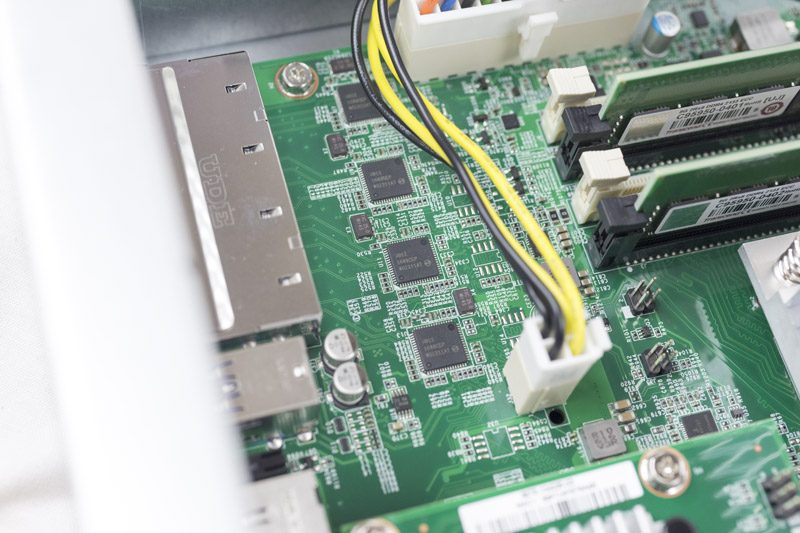
During our hardware deep dive we also wanted to look at the SATA side where drives are connected to the motherboard. You can see that Netgear is using SFF-8087 to SFF-8087 cabling from the motherboard to the hot-swap backplanes. The SFF-8087 cabling costs more, and the headers can cost more on motherboards but it is a better solution than having 12x 7-pin SATA cables snaking through the chassis.
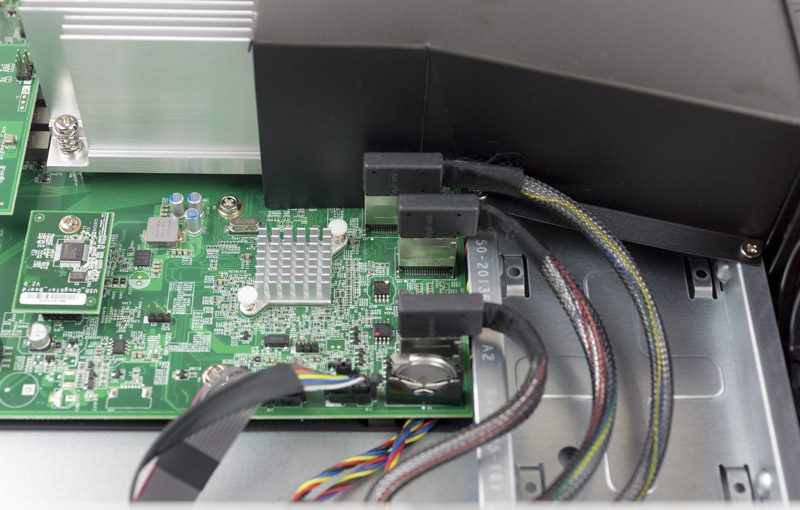
The Intel Xeon E3-1200 V5 Skylake platform natively does not support 12 SATA devices, and we did see eSATA ports in the rear of the chassis so we knew there were other SATA controllers onboard. We did find that Netgear is using Marvell PCIe to SATA chips in the platform which is a common choice.
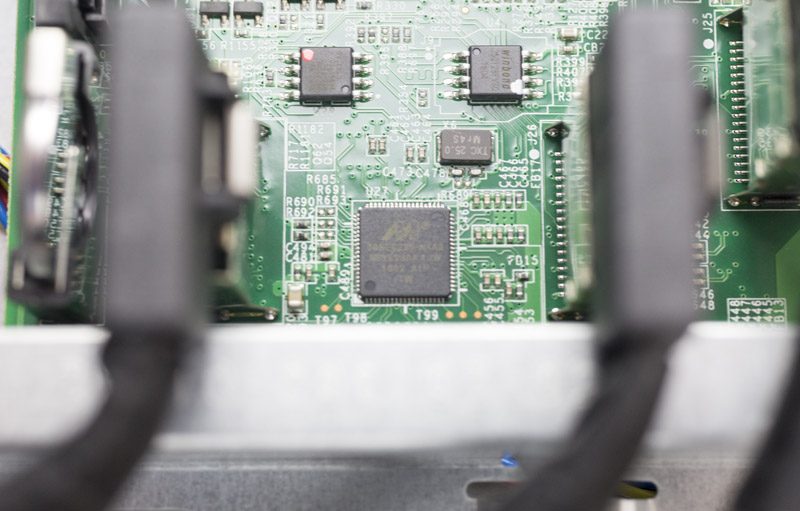
The Intel Xeon E3-1245 V5 is a powerful 3.5GHz CPU. The air shroud channelling airflow from the midplane fans provided ample cooling. When we removed this air shroud we were in for a surprise. The chassis has additional mounting points for internal 2.5″ drives and even has power connectors and two 7-pin SATA headers. With SSD failure rates well below 0.5% per year adding a non-hot-swap SSD pair is certainly feasible. This capability is not mentioned on the official spec page as of this writing.
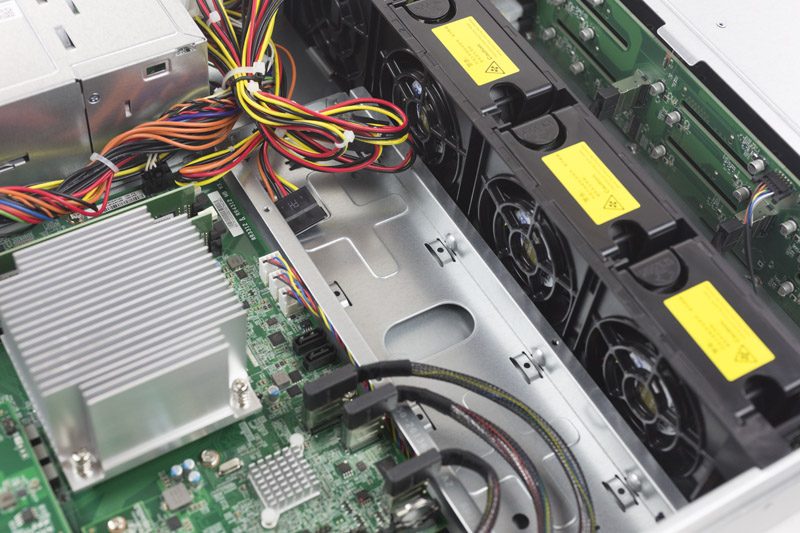
This is one of the fun times reviewing hardware that we find a lot of capabilities never mentioned in the tech specs sheet. Most users will never open one of these ReadyNAS units as there is little need to. We did find a plethora of expansion options if one was looking to expand the unit’s capabilities.
The Netgear ReadyNAS Setup and Web Interface
We really like the overall look and feel of the Netgear ReadyNAS setup utilities and web interface. The setup utilities are extremely easy. One can tell the ReadyNAS setup program grew from its consumer/ SMB NAS series.
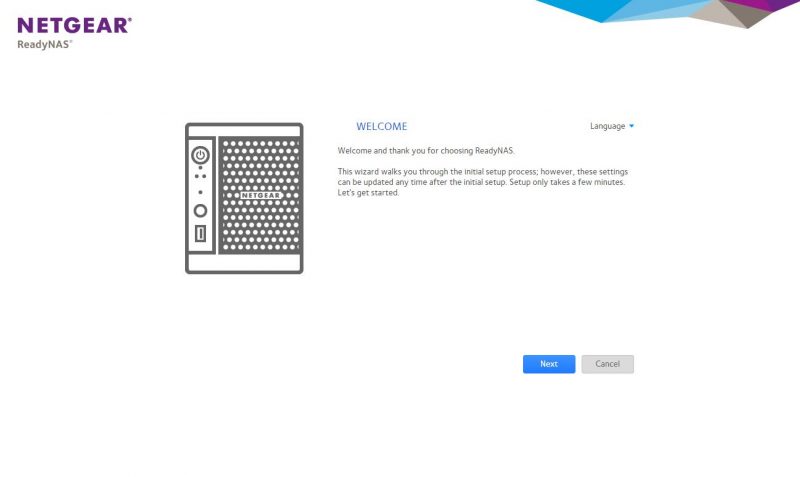
Using Netgear RAIDar we were able to quickly find the unit on our network and begin the installation. You can see that Netgear provides both IP and MAC addresses in RAIDar which is very helpful when using network discovery tools.
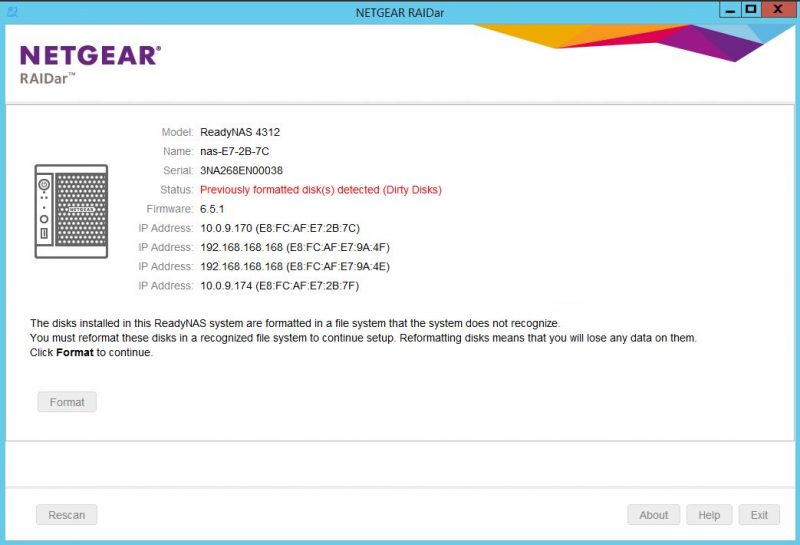
Once the NAS is setup one can use the Admin page to perform most configuration tasks. After using the Netgear web interface it was readily apparent that the UI is setup for a SMB administrator. That is great because smaller companies often cannot afford an EMC or NetApp administrator.
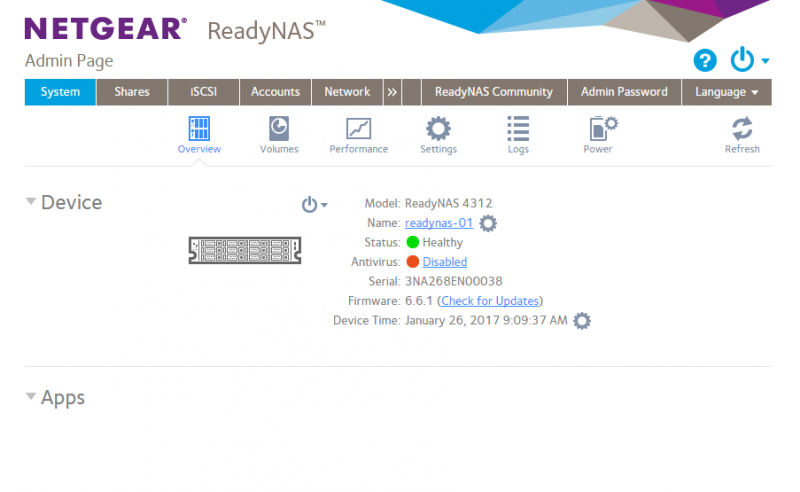
There are plenty of details about the system in the Admin Page. You can see features like network settings for each NIC.
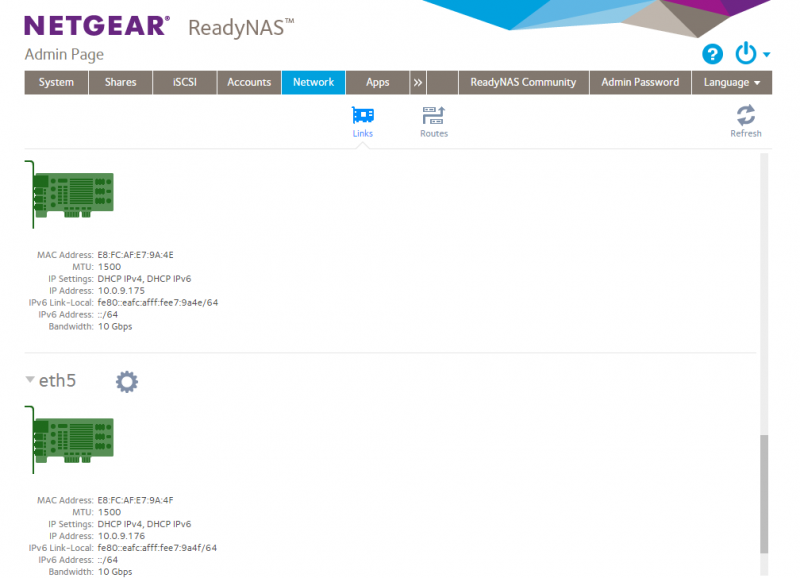
Setting up iSCSI is extremely simple. Checkboxes and drop downs let you configure snapshots, thin provisioning and compression all within seconds.
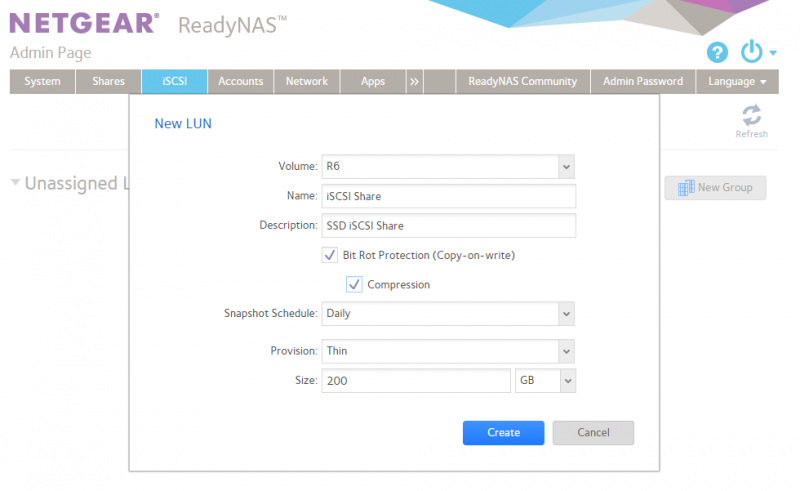
We tested this with a novice admin and setting up an iSCSI target then connecting it to VMware ESXi took about 2 minutes.
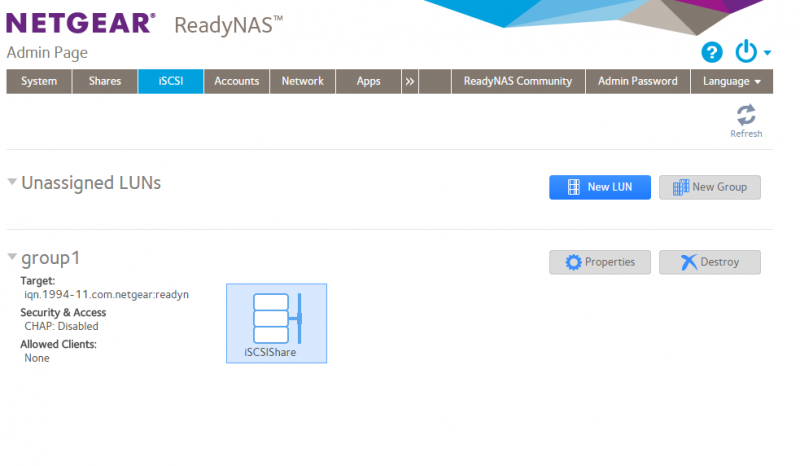
Likewise, network shares are extraordinarily easy to setup. You can see adding features such as AFP and rsync alongside standard options like NFS and SMB is as easy as checking a box.
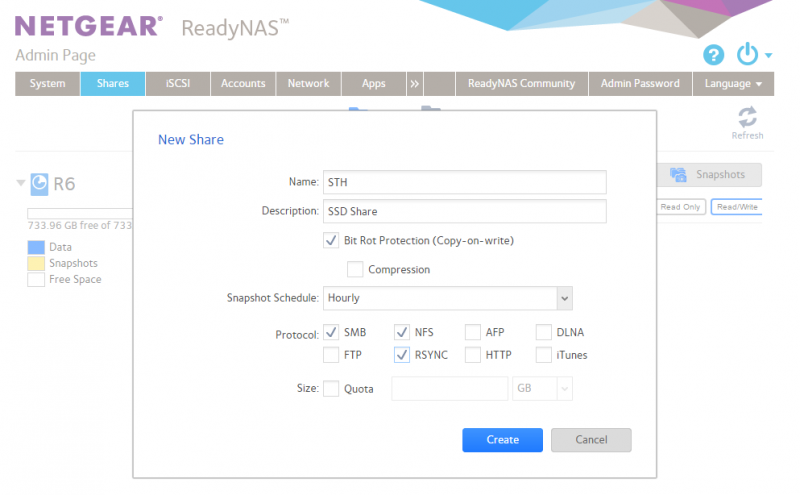
Another great feature is Netgear’s backup utility. We see many SMB admins forego NAS backup because they believe RAID is a backup solution. RAID is for redundancy and uptime, not an end-all backup. Netgear allows local backups to devices such as eSATA drive sas well as providing an easy way to connect to even offsite servers.
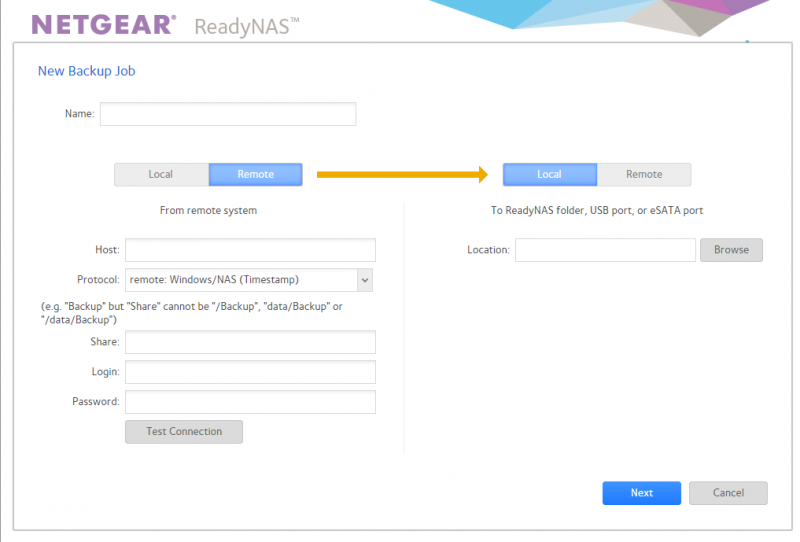
Up until this point we have not talked about volume setup. Netgear’s X-RAID mode automatically absorbs new drives and expands storage pools to utilize the drives. For the novice admin, Netgear has automated the confusion of which RAID levels to use.
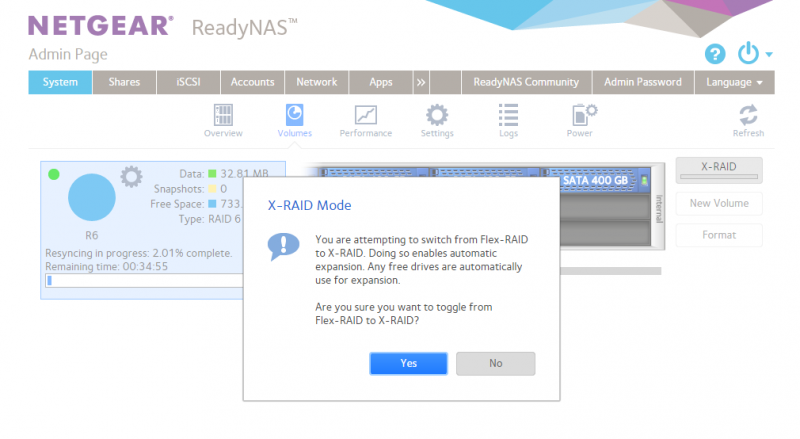
Since the underlying system is using mdadm (more on this in the CLI section) Netgear can provide online capacity expansion. Associated with that there are rebuild times. We are adding a SSD volume here and you can see the indicator for rebuild times.
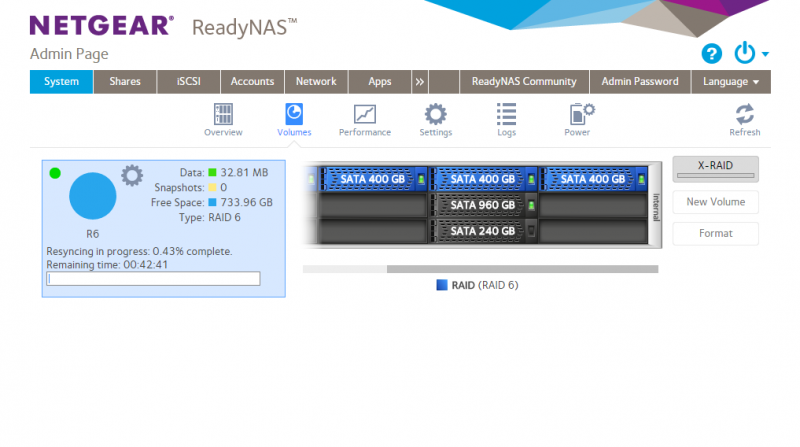
We also tested what would happen if failures occured. You can see the drive labels turn from Blue to Red. On the face of the unit the LEDs actually light up to match the status on the dashboard. While this may seem like a simple feature, many NAS units do not match LED colors.
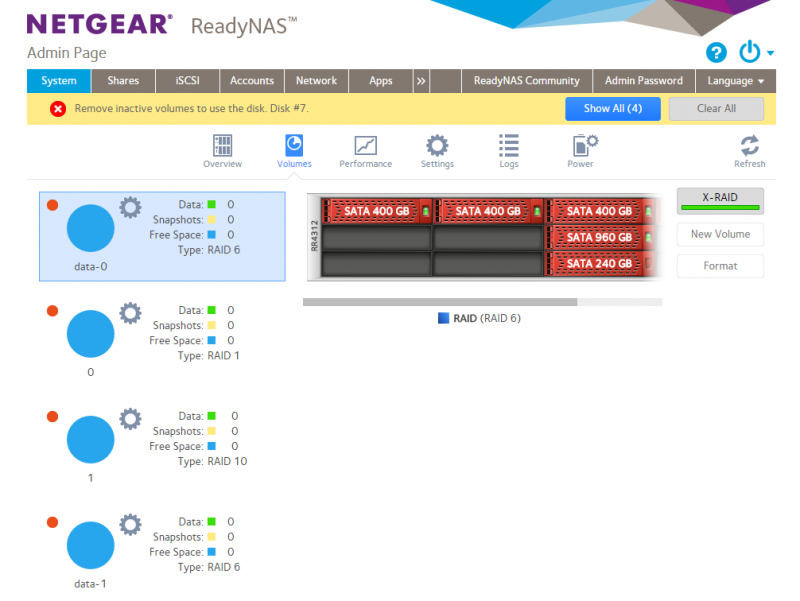
One editorial comment on the ReadyNAS – Netgear is in dire need of adopting a Docker solution. Of the 75 or so applications that one can install via the web UI, about 20% are related to P2P file sharing and media streaming. We would not expect those to be target applications for a 2U business oriented ReadyNAS. There are undoubtedly some useful apps such as SugarCRM (alternative to Salesforce), Drupal, Subversion and others on the list. At the same time, it is hard to utilize the full power of the Intel Xeon E3-1245 V5 CPU because there are so few options for running applications. Other vendors have adopted KVM virtualization and/or Docker to allow business users to better utilize CPU resources.
Diving deeper: The Netgear ReadyNAS CLI
We did want to get a deeper look at the Netgear ReadyNAS since the Intel Xeon E3-1245 V5 is a powerful CPU. We fired up a SSH session and utilized the admin credentials. We were met with a familiar Linux system:
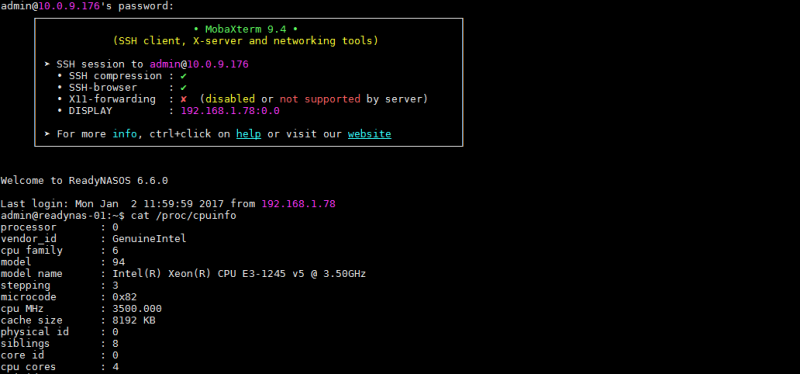
The installed Netgear ReadyNAS 6.6.0 is based on Debian Jessie which is an extremely popular Linux variant. We were surprised to find that we could “su -” from the command line and have free reign to administer the server. Just to give you an idea of how open the Netgear ReadyNAS platform is, we were able to install build tools and compile and run the old UnixBench benchmark suite:
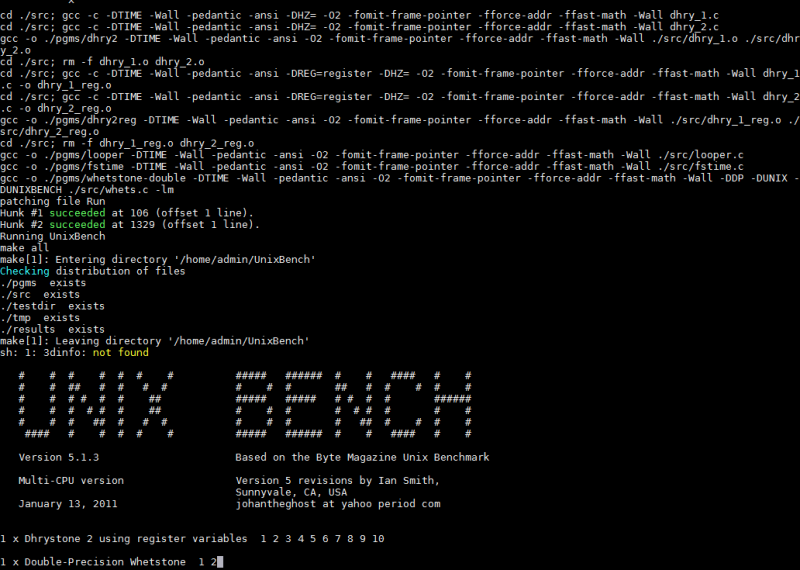
This is great since it does mean one can run custom applications to take advantage of the hardware of the system. The Intel Xeon E3-1245 V5 is a powerful processor so one can install Debian packages or build your own software to run on the NAS. That can save another $1000 or more on a dedicated server appliance for small businesses.
Docker did not install using “wget -qO- https://get.docker.com/ | sh” however with a little more time to work on dependencies there is a good chance that would work as well.
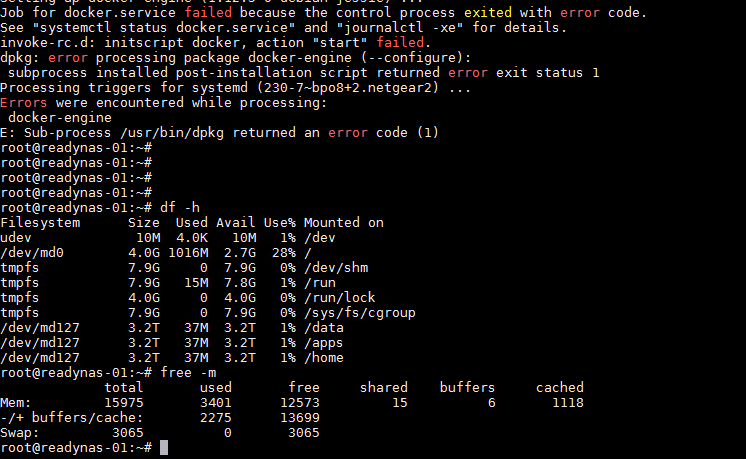
The ability to run commands also means you can use raw mdadm commands. For example:
root@readynas-01:~# cat /proc/mdstat
Personalities : [raid0] [raid1] [raid10] [raid6] [raid5] [raid4]
md1 : active raid6 sdi2[7] sdh2[6] sdg2[5] sdf2[4] sdd2[3] sdc2[2] sdb2[1] sda2[0]
3139584 blocks super 1.2 level 6, 512k chunk, algorithm 2 [8/8] [UUUUUUUU]
md126 : active raid6 sdi4[3] sdg4[2] sdh4[1] sdf4[0]
1093704064 blocks super 1.2 level 6, 64k chunk, algorithm 2 [4/4] [UUUU]
md127 : active raid6 sdi3[8] sdh3[7] sdf3[6] sdg3[5] sde3[4](F) sda3[0] sdd3[3] sdc3[2] sdb3[1]
2315157504 blocks super 1.2 level 6, 64k chunk, algorithm 2 [8/8] [UUUUUUUU]
md0 : active raid1 sdi1[8] sdh1[7] sdf1[6] sdg1[5] sda1[0] sdd1[3] sdc1[2] sdb1[1]
4190208 blocks super 1.2 [8/8] [UUUUUUUU]
That is great because it would help if there was ever a need for recovery. It also means that if someone has a wanton disregard for your data, one can do a lot of damage from the CLI. Poking around we could see that Netgear is using Intel 10Gbase-T NICs. We could also see Marvell 9235 and Marvell 9170 PCIe 2.0 SATA III controllers. The Marvell controllers are low power and do support port multipliers. We would have preferred to have seen LSI SAS 3008 controllers onboard a system in this price range.
Processor Performance
Since we were able to run our standard Linux-Bench CPU benchmark suite on the Netgear Debain OS, we have performance data. Here is an example run. We are going to provide a few benchmarks here. Although it is not the focus of the system, since the Debian OS is available to install software on we did want to show some performance figures for the CPU. The Intel Xeon E3-1245 V5 is a quad core, eight thread CPU with a 3.5GHz base clock and the performance shows how well the Skylake Xeon performs.
Since this review is image heavy, and you can get over 50 benchmark data points linked above, we are going to omit adding charts with CPU benchmarks. We are going to publish one in this review and that is with our Linux kernel compile benchmark.
The combination of Skylake cores and higher clock speeds make this system perform extremely well in raw compute power.
Storage Performance
We are going to utilize three primary use cases. We are going to have sequential reads/ writes which are typical in many backup and larger file NAS systems. We are going to omit 4K random IOPS because using flash or DRAM storage for doing heavy 4K workloads became a leading practice in 2014/ 2015. In 2017 we expect these workloads to migrate off of SATA as NVMe flash becomes more common. We have already hit the point where enterprise NVMe flash is less expensive than equivalent endurance SATA flash. For this test we utilized 12x HGST 10TB He10 drives (HUH721010ALN600). Those are likely higher-end drives than many users will opt for with this unit but we have been doing a number of articles using these twelve drives. We utilized four dual Xeon E5-2600 V3/ V4 nodes on 40GbE ports connected to our QCT QuantaMesh T3048-LY9 lab switch that connected the ReadyNAS 4312X to our network.
Here are our NFS results:
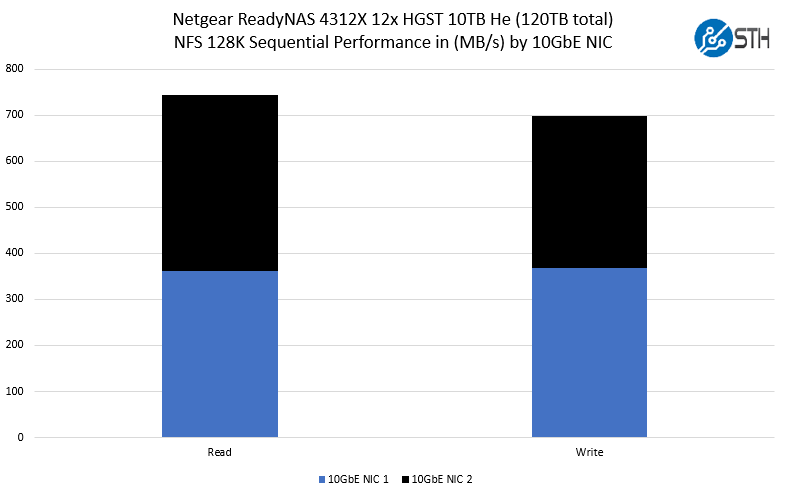
And our iSCSI results:
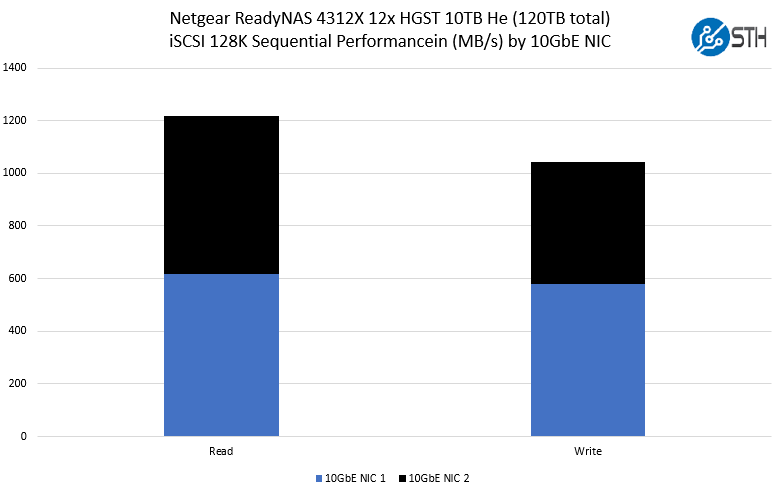
For the workloads this machine is intended for, we think this is solid performance without the aid of SSD caching. As you can see from screenshots earlier in this review, we did test the unit with SATA SSDs as well however the focus of this unit is on 3.5″ hard drives. If you do attach a mix of SSDs and HDDs we suggest using hard drives on the Marvell SATA ports.
Power Consumption
In our lab we are able to measure power consumption of equipment on a per-outlet basis using our calibrated APC / Schneider Electric PDUs. We do use 208V power which is more efficient than 120V power found in many office equipment closets. We tested the system under three conditions using 8x 8TB WD helium drives: idle, 10Gbase-T file server and max observed. Our max observed test we were running multi-threaded CPU benchmarks alongside heavy random disk I/O patterns.
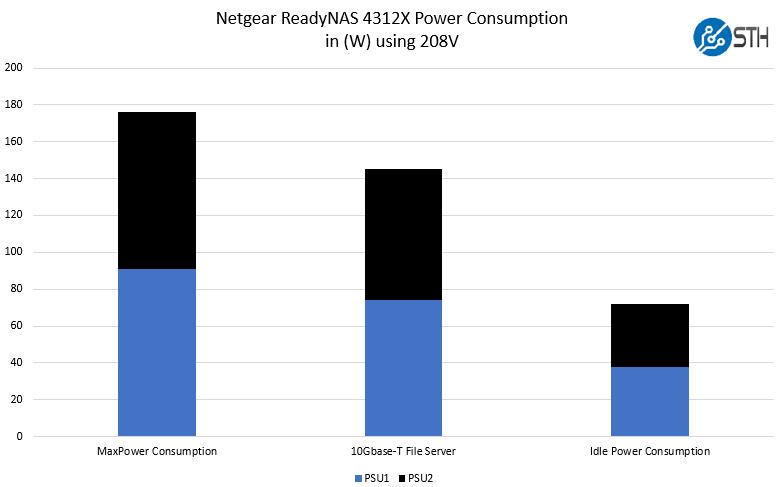
As you can see, the unit sips power. We did not take advantage of the CPU’s onboard GPU features so there is room to go higher in terms of power consumption but we would suggest that most users will not utilize the GPU and are unlikely to hit CPU loads as high as we did.
The power consumption does have a side effect. The unit is rated for sub 30dba operation which makes it quiet enough to put in an office equipment closet.
Final Words
With certifications for both VMware vSphere 6.0 and Microsoft the Netgear ReadyNAS is ready to integrate into SMB server rooms. Netgear’s X-RAID feature makes managing an overall storage pool thoughtless. It configures storage automatically for you. Unlike high-markup storage you do not need a specifically skilled professional to maintain the ReadyNAS as the management UI is very simple. The areas we would like to see improved upon are for SAS3 and NVMe SSD support along with a higher-end application solution to take advantage of the E3-1245 V5. For power users, the CLI option is present and the Netgear did not disappoint in terms of access to underlying hardware. Overall, the dead simple management of the unit combined with capacities topping 120TB and 10Gbase-T connectivity make the ReadyNAS 4312X an excellent NAS choice for the modern SMB market.

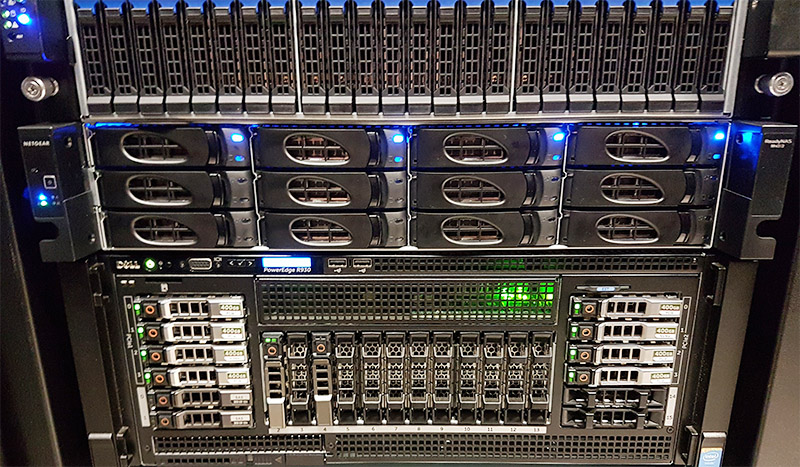
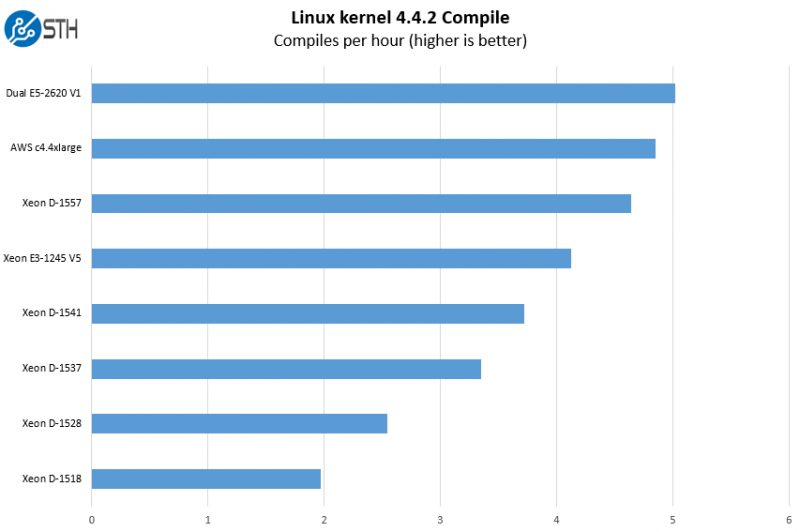



I’ve read the other review on this NAS. This is a proctology exam in comparison but we appreciate that you’re actually doing a thorough job.